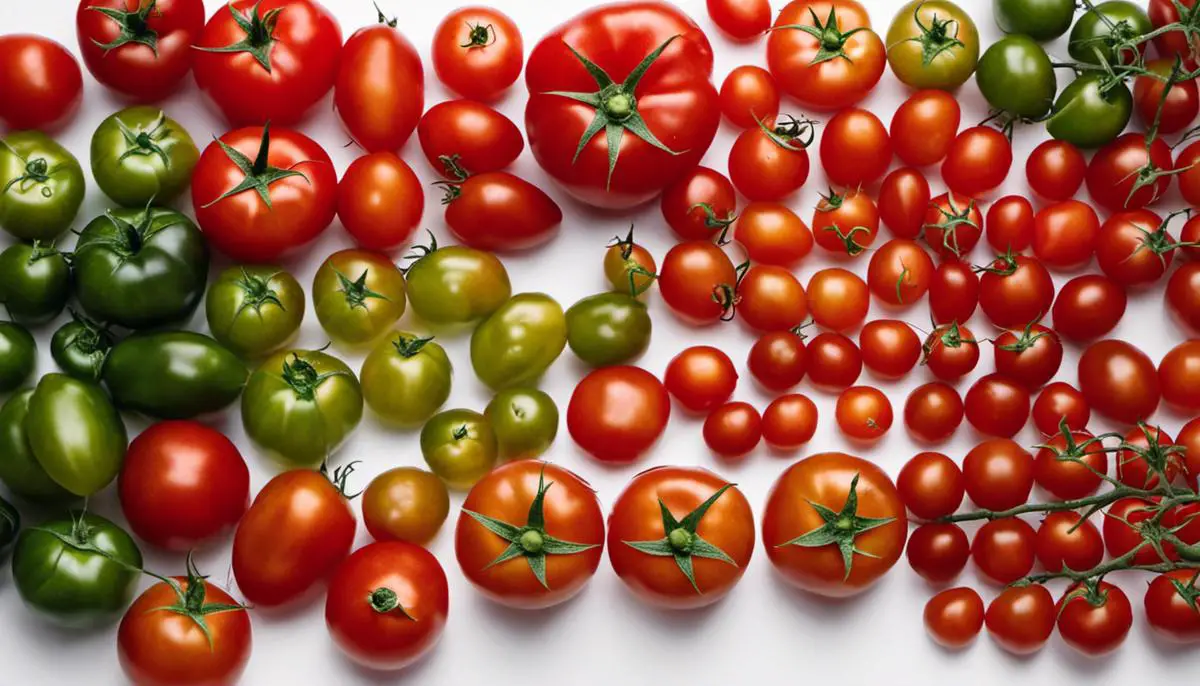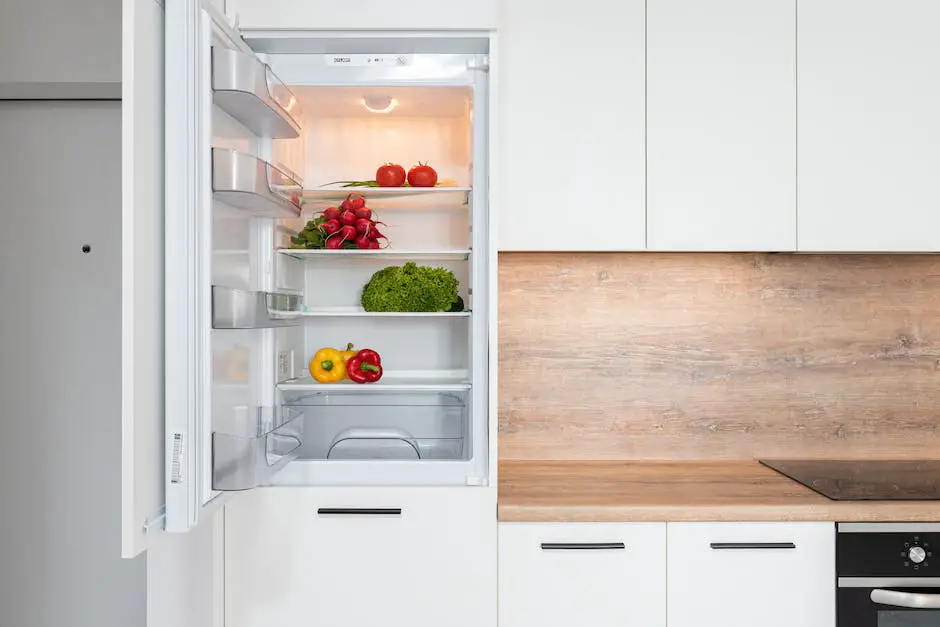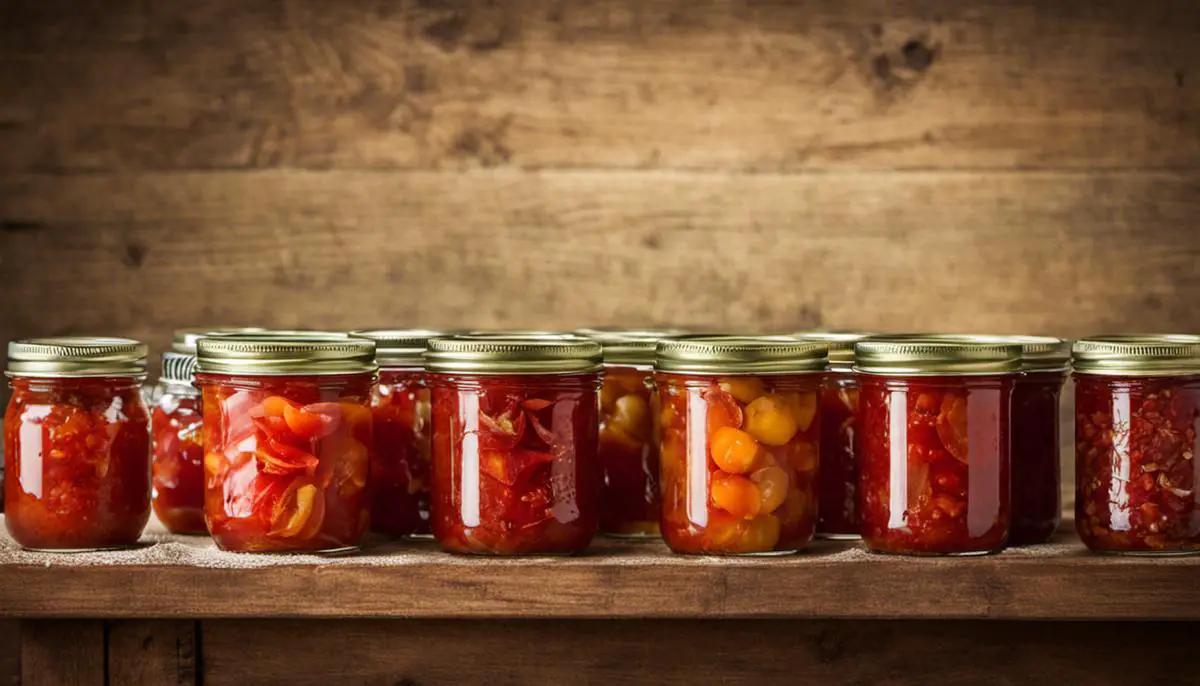Table of Contents
As a staple of a diverse range of culinary applications, tomatoes offer an extensive gamut of flavors and textures. However, to savor the maximum potential of these vibrant fruits, it’s crucial to comprehend the stages of their ripeness and its impact on their palate. This understanding extends from recognizing the visual cues of color changes to the tactile analysis of firmness, all of which dictates the ideal storage methods. Furthermore, it’s essential to discern when it’s appropriate to refrigerate them or let them stay at room temperature. In this exploration, we will also delve into long-term preservation techniques, including canning, freezing, and dehydrating, equipping you with the necessary knowledge to enjoy the taste of ripe tomatoes at all times.
Understanding Tomato Ripeness
Understanding Tomato Color
Identifying the color of a tomato is the first step in discerning its ripeness. Green tomatoes are the least ripe, having just started their life cycle. As they mature, they gradually transform to a light pink color. The riper the tomato, the deeper the red hue becomes. Fully ripe tomatoes boast a deep, vibrant red. However, it’s vital to remember that not all tomatoes turn red when ripe. Some varieties may maintain a yellow, green, or even purple coloration when fully mature. Therefore, familiarity with the specific type of tomato you’re dealing with is key.
The Test of Touch
Touch is another crucial factor in determining tomato ripeness. Tomatoes that are still hard when lightly squeezed are typically underripe, and the surface should give slightly under your fingers when fully ripe. Avoid tomatoes that feel overly soft or have visible blemishes as they are often overripe. Learning to rely on your sense of touch when selecting tomatoes can help ensure you’re picking the best fruit for your needs.
Ideal Ripening Conditions
Tomatoes typically continue to ripen after being plucked from the vine, thus understanding their ideal ripening conditions can be incredibly beneficial. Never store tomatoes in the refrigerator before they’re completely ripe, as the cold can hinder the ripening process and alter their texture. Instead, keep them at room temperature, ideally in a well-ventilated area away from direct sunlight. To speed up the ripening process, you can place tomatoes in a paper bag with ethylene-producing fruits like bananas or apples.
Storing Techniques for Different Levels of Ripeness
Depending on their degree of ripeness, different storing methods are required for tomatoes. Green tomatoes can be ripened gradually on the countertop, while half-ripe tomatoes might need to be kept in a paper bag or perforated plastic bag to ripen evenly. Fully ripe tomatoes can be stored in the refrigerator, but they should be consumed within a couple of days to prevent them from becoming overripe. By understanding the varying degrees of tomato ripeness, you’ll be better equipped to store them appropriately and savor them at their peak flavor and texture.

Storing Fresh Tomatoes
Storing Tomatoes at Room Temperature
For fresh tomatoes that are not fully ripe, it’s best to store them at room temperature. Place them in a single layer, stem-side down, on a plate or a countertop away from direct sunlight. This method allows for natural and uniform ripening, contributing to better flavor and a firm but tender texture.
Avoid stacking them on top of each other, as this could lead to bruising and faster deterioration. Additionally, keeping them stem-side down can prevent moisture from escaping or bacteria from entering through the scar where they were connected to the vine.
Using the Refrigerator
Once your tomatoes are ripe, and you want to slow down the ripening process to extend their lifespan, it’s time to move them into the refrigerator. Before doing so, ensure your tomatoes are completely dry since moisture can encourage mold growth. Place them in the vegetable drawer, where the temperature is consistently cool but not too cold.
Remember to take them out of the refrigerator about an hour before you intend to use them, as this will allow them to regain their ideal flavor and texture. Tomatoes stored in the refrigerator may get a bit mealy, but letting them return to room temperature helps reverse this effect.
If you’ve sliced a tomato and have leftovers, those should also go into the refrigerator but placed in an airtight container to prevent the tomato from drying out or absorbing other smells from the fridge.
Understand the Impacts
Chilling tomatoes in the refrigerator does impact their taste and texture. The cold can break down the cell walls within the tomato causing them to become mushy. It can also diminish the flavor, making them taste less sweet and flavorful.
However, leaving ripe tomatoes at room temperature for too long can also cause them to overripe or go bad. This results in a soft and sometimes rotten texture, with a sour taste.
Each method of storing tomatoes has its advantages and drawbacks. Your choice should depend on the ripeness of your tomatoes when you purchase or pick them, and when you plan to use them. For a delicious tomato experience, it’s crucial to store them properly. So remember, room temperature for ripening, and refrigeration for preserving ripe tomatoes.

Long-term Tomato Preservation
Choosing the Right Tomatoes
Start with the freshest, ripest tomatoes you can find. They should be free of bruises, blemishes, and bad spots. Tomatoes harvested from your own garden (or bought from a farmer’s market) often have the best flavor for preservation.
Canning Tomatoes
Before you begin canning, gather all your necessary equipment: a large canning pot with rack, glass canning jars with lids and bands, a jar lifter, a wide-mouth funnel, and a bubble remover. You will be processing the jars in boiling water, so make sure this equipment is sturdy and safe to use in this manner. Sterilize your jars by washing them in hot soapy water or running them through the dishwasher.
To can your tomatoes, blanch them in boiling water for a minute and then plunge them into ice water. This will loosen their skins and make them easier to peel. Once peeled, core the tomatoes and remove any bad spots. You can then pack them into your jars, leaving about a half inch of headspace. Add a teaspoon of salt per quart to help preserve the flavor, or according to recipe instructions if you’re following one. Wipe the rim of the jar clean before applying the lid and screwing on the band.
Next, place the jars carefully into your canning pot. The water should cover the jars by at least one inch. Process the jars in this boiling water bath for the correct amount of time according to your processing directions (usually around 45 minutes for quarts).
Freezing Tomatoes
Freezing tomatoes is a simpler method of preservation. Begin by washing, coring, and blanching your tomatoes as described earlier. Once peeled, you can either cut the tomatoes into chunks or leave them whole. Place them in freezer-safe containers or bags, leaving about one inch of headspace for expansion as they freeze. Seal the containers or bags and freeze them.
Dehydrating Tomatoes
To dehydrate tomatoes, start by washing, coring, and slicing them. Arrange the tomato slices on dehydrator trays, making sure the pieces do not overlap. Dehydrate according to your dehydrator’s instructions, checking every few hours until they are leathery yet pliable.
Safety Measures and Shelf Life
For all methods, ensure you properly sanitize all your equipment to avoid bacteria and molds. If canning, don’t forget to use a pressure canner for low-acid foods to avoid the risk of botulism.
Canned tomatoes, if properly processed and stored in a cool and dark location, can last for up to a year. Frozen tomatoes can be kept for six to nine months, and dehydrated tomatoes can be stored in an airtight container for a year. In all cases, it’s best to eat the preserved tomatoes within the time frame for the best flavor and nutrition.
Always visually inspect preserved tomatoes before use. If you notice any signs of discoloration, foul smells, or if the canning lid is bulging, discard the tomatoes immediately. Never consume food from a jar with a broken seal.

Effective storing and preserving of tomatoes is as much an art as it is a science. By recognizing the various ripening stages, you can optimize their taste and employ the right storage technique. You’ll find that the freshness of a garden-picked tomato can be extended if handled right. Also, mastering preservation methods such as canning, freezing, and dehydrating can open a window to year-long enjoyment of homegrown or locally sourced produce. The gratification of biting into a well-stored, flavorful tomato, whether it’s within its season or not, is a culinary pleasure that everyone should be able to experience.
